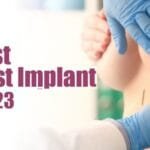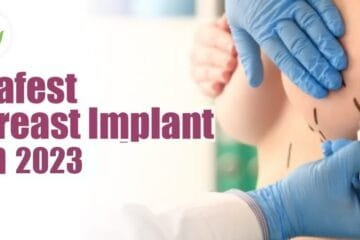How do I know when my breast implants need replacing?
As a woman who has undergone breast implant surgery, it is important to be aware of the signs that your breast implants may need replacing. Breast implants, whether they are saline or silicone, are not designed to last a lifetime. Over time, they may wear out or develop complications that require replacement surgery.
Breast implants are a popular cosmetic procedure among women, with millions of surgeries performed every year worldwide. Breast implants are not designed to last a lifetime and need to be replaced at some point. However, how do you know when your breast implants need replacing? In this article, we will explore the different signs that indicate it’s time to replace your breast implants, diagnose breast implant problems, and the breast implant replacement process.
In this article, we will provide you with a comprehensive guide to the signs of breast implant problems that need replacing. We will also discuss the lifespan of breast implants, the importance of knowing when to replace them, and the objective of this video. By the end of this article, you will have a clear understanding of what to look out for and when to seek professional advice.
Introduction:
Breast implants are a common cosmetic procedure that involves inserting a silicone or saline-filled implant to enhance the size and shape of the breasts. While breast implants are designed to last for a considerable amount of time, they are not meant to be lifelong devices. On average, most breast implants last between ten and twenty years, and women need to replace them after that.
Knowing when to replace breast implants is essential to maintaining breast health and avoiding complications. The signs that your breast implants need replacing can vary depending on the type of implant you have and other factors such as your age, health, and lifestyle.
The objective of this article is to educate women on the lifespan of breast implants, signs that indicate breast implants need replacing, how to diagnose breast implant problems and the breast implant replacement process.
The Lifespan of Breast Implants
Breast implants are not designed to last forever, and it’s essential to understand the lifespan of breast implants to know when to replace them. There are two types of breast implants: silicone and saline-filled. Both types of implants have a shell made of silicone, but the filling is different.
Silicone breast implants are filled with a silicone gel that mimics the texture and feel of natural breast tissue. Saline breast implants are filled with a sterile saltwater solution. Both types of implants have a similar lifespan of about ten to twenty years.
However, the lifespan of breast implants can vary depending on several factors, such as the patient’s age, health, lifestyle, and type of implant. For example, older women with a history of smoking or who have undergone radiation therapy may experience complications with their implants earlier than women who are younger and healthier.
Additionally, if a woman experiences an implant rupture or other complications, she may need to replace her implants sooner than expected. Overall, it’s best to consult with a board-certified plastic surgeon to determine when it’s time to replace your breast implants.
Signs That Your Breast Implants Need Replacing
Knowing the signs that your breast implants need replacing is critical to avoiding complications and ensuring the health of your breasts. Here are some of the most common signs that indicate it’s time to replace your breast implants:
A. Changes in the appearance or shape of the breasts
One of the most apparent signs that your breast implants need replacing is a change in the appearance or shape of your breasts. Over time, breast implants can shift, deflate, or become misshapen, causing asymmetry or sagging. Additionally, if you notice that your breasts are becoming larger or smaller than their original size, it may be time to replace your implants.
B. Pain or discomfort in the breasts
If you experience any pain or discomfort in your breasts, it is important to get it checked out by a medical professional. Infection, capsular contracture, and implant rupture are just a few of the factors that can cause pain or discomfort. If your breast implants are painful and causing you discomfort, it is important to consult with a plastic surgeon to determine the best course of action.
C. Rupture or leakage of the implant
Rupture or leakage of breast implants is a common reason why women need to have their implants replaced. While modern implants are designed to be durable and long-lasting, they are not indestructible. Over time, implants can develop small leaks or tears that can cause the saline or silicone to leak out. If you notice any changes in the shape or feel of your breasts, or if you experience pain or discomfort, it is important to get your implants checked by a qualified plastic surgeon.
D. Capsular contracture
Capsular contracture is a condition that occurs when the scar tissue that forms around the implant becomes too tight, causing the breast to become hard, painful, and misshapen. Capsular contracture can occur at any time after breast augmentation surgery, and it is one of the most common reasons why women choose to have their implants replaced. If you experience any of the symptoms of capsular contracture, including pain, hardness, or asymmetry, it is important to seek medical attention as soon as possible.
E. Bottoming out or implant malposition
Bottoming out, or implant malposition, is a condition that occurs when the implant shifts or drops below its original position, causing the breast to look unnatural. Gravity, weight gain, and breast trauma are just a few of the things that can cause this. If you notice that your implants have shifted or dropped, or if your breasts have an unnatural appearance, it is important to consult with a plastic surgeon to determine the best course of action.
F. Implant rippling or wrinkling
Implant rippling or wrinkling is a condition that occurs when the implant develops ripples or wrinkles under the skin, which can be visible or palpable. This is more common in patients with thin skin, inadequate tissue coverage, or implants that are too large for the breast. Implant rippling or wrinkling can be corrected by replacing the implants with a different size or type, or by using a different surgical technique.
Diagnosing Breast Implant Problems
A. Self-examination
Regular self-examination of the breasts is an important part of breast implant maintenance. Women should regularly examine their breasts to check for any changes or abnormalities. During a self-examination, it is important to look for changes in the size or shape of the breasts, as well as any lumps or bumps that were not present before. It is also important to feel for any changes in the texture of the skin as well as any pain or discomfort.
B. Clinical examination
In addition to self-examination, it is also important to have regular clinical examinations of the breasts. This involves a physical examination by a qualified medical professional, who will look for any changes in the size, shape, or texture of the breasts, as well as any lumps or bumps.
C. Imaging tests
Breast implant illness tests and Imaging tests, such as mammograms, ultrasound scans, or MRI scans, may also be used to diagnose breast implant problems. These tests can help identify any leaks or ruptures in the implant as well as any changes in the shape or texture of the breast tissue.
Replacing Breast Implants
A. Consultation with a board-certified plastic surgeon
If breast implant problems are detected, it is important to seek the advice of a board-certified plastic surgeon. During a consultation, the surgeon will examine the breasts and discuss the patient’s concerns and goals. They will also discuss the options for replacing the implants and the risks and benefits associated with each option.
B. Choosing the right type and size of implant
When replacing breast implants, it is important to choose the right type and size of the implant. There are different types of breast implants available, including saline and silicone implants, and each type has its own advantages and disadvantages. The surgeon will work with the patient to choose the best type and size of implant based on their individual needs and preferences.
C. Surgical procedure and recovery
The surgical procedure for replacing breast implants will depend on the individual case. In some cases, the old implant can be removed and replaced with a new one through the same incision. In other cases, a new incision may need to be made. Recovery time will also vary depending on the individual case, but most women can return to normal activities within a few weeks.
D. Cost considerations
The cost of replacing breast implants can vary depending on a number of factors, including the type and size of the implant, the surgeon’s fees, and any additional costs associated with the surgical procedure. It is important to discuss the costs with the surgeon during the consultation.
Conclusion:
Breast implants have a lifespan and may need to be replaced over time. It is important to be aware of the signs that your breast implants may need replacing, including changes in appearance or shape, pain or discomfort, rupture or leakage, capsular contracture, bottoming out or implant malposition, and implant rippling or wrinkling. Diagnosing breast implant problems involves self-examination, clinical examination, and imaging tests. If problems are detected, it is important to consult with a board-certified plastic surgeon to discuss the options for replacing the implants.
References:
Here are some medical journal articles related to breast implant replacement:
- Cunningham BL, McCue JL, Oliva A, Durand M. Replacement of textured breast implants: prospective study and literature review. Plast Reconstr Surg. 2009 Feb;123(2):553-61. doi: 10.1097/PRS.0b013e3181951c03. PMID: 19182699. (https://journals.lww.com/plasreconsurg/Abstract/2009/02000/Replacement_of_Textured_Breast_Implants__.29.aspx)
- Headon H, Kasem A, Mokbel K. Capsular contracture after breast augmentation: an update for clinical practice. Arch Plast Surg. 2015 May;42(3):532-43. doi: 10.5999/aps.2015.42.3.532. Epub 2015 May 14. PMID: 26015883; PMCID: PMC4442042. (https://synapse.koreamed.org/DOIx.php?id=10.5999/aps.2015.42.3.532)
- Bae YC, Kim KS, Lee DW. Imaging findings of complications and surgical outcome after augmentation mammoplasty. Korean J Radiol. 2014 Jan-Feb;15(1):59-67. doi: 10.3348/kjr.2014.15.1.59. Epub 2014 Jan 6. PMID: 24497872; PMCID: PMC3905872. (https://synapse.koreamed.org/DOIx.php?id=10.3348/kjr.2014.15.1.59)
- Adams WP Jr, Bengtson BP. Factors affecting implant malposition and rotation after primary subpectoral breast augmentation. Plast Reconstr Surg. 2017 Jan;139(1):1e-9e. doi: 10.1097/PRS.0000000000002834. PMID: 28027231. (https://journals.lww.com/plasreconsurg/Fulltext/2017/01000/Factors_Affecting_Implant_Malposition_and_Rotation.1.aspx)














